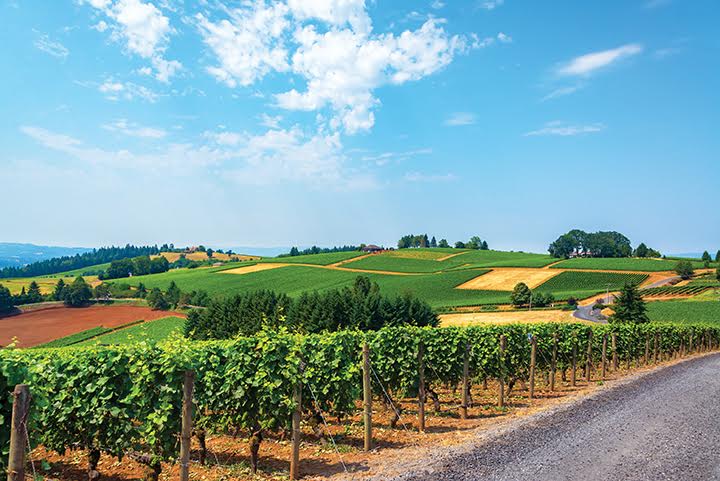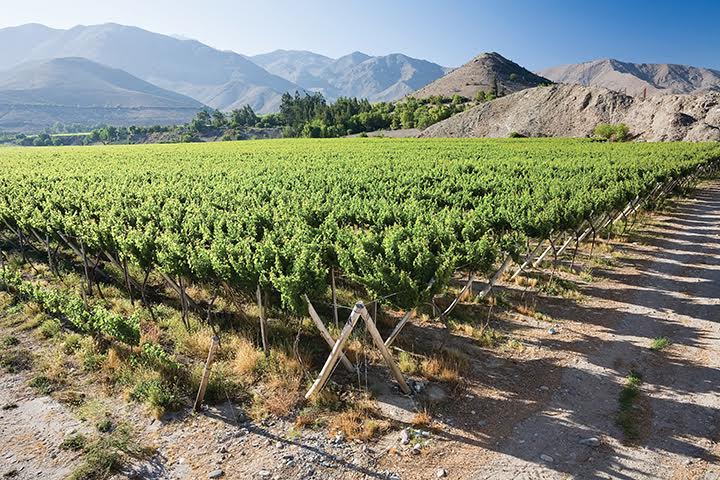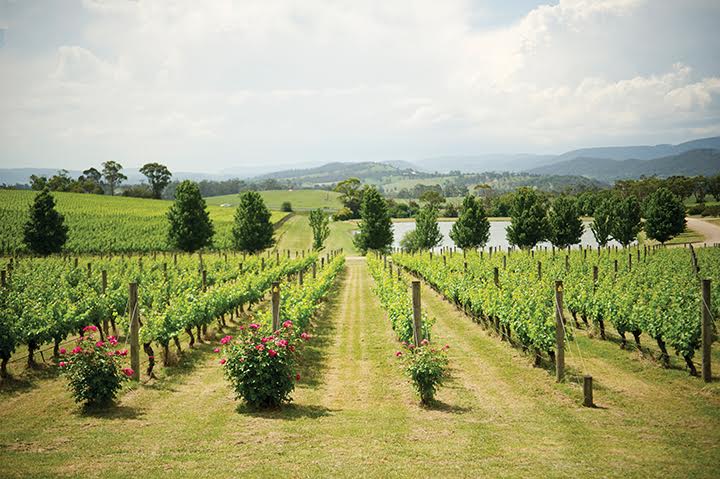As complex as pinot noir tastes, its intricacies extend far beyond notable flavor profiles and favorable food pairings. While infamous for its extremely temperamental growing process, which is due in large part to its thin skin and cool climate dependency, pinot noir’s increased popularity in recent years can be attributed to a surge in production around the world. In comparison to other grapes, pinot noir has a high level of transparency, allowing it the unique ability to reflect its terroir—the environment in which the grapes are produced.
Factors such as soil type, climate and topography greatly influence its final hue, aroma and depth of flavor, which explains the immense variation in pinot noir from region to region. Up until the 19th century, pinot noir was grown exclusively in Europe and to this day, is still found in its largest capacity in France. However, more and more vintners from all over the globe have taken on the challenge of growing such an arduous grape because at its best, it can capture an area’s culture, geography, history and agriculture in just one sip.
Burgundy
For hundreds of years, France has been known as the birthplace of pinot noir, specifically the historic region of Burgundy. Its native limestone soil is a distinctive characteristic in identifying a Burgundian pinot noir, leaving the wine with a more savory and mineralized taste. The climate can be described as moderate continental with warm summers and cold winters, and precipitation ranging from rain, hail and frost at any time during the growing season.
The majority of Burgundy’s pinot noir comes from the Côte d’Or, an elongated limestone slope which produces over 11,000 acres of the pinot noir varietal. The Côte d’Or can be split into two separate hills, the Côte de Nuits to the north and the Côte de Beaune to the south. The heightened elevation from each slope is what allows grapes that are at the top to receive just the right amount of sunlight and proper drainage, creating some of the finest and most expensive pinot noirs in the world. While the flavor and quality can vary drastically according to each village, the smallest variance in soil can make all the difference, as well as when the grapes were actually harvested. Pinot noirs from Burgundy are oftentimes built to age, resulting in a wine that’s more acidic with a lower alcohol content than most.
California
 Aside from France, the second most notorious region for winemaking goes to Napa Valley. Pinot noir was originally planted in Napa Valley in the 1940s, however it is most commonly found today throughout places such as Sonoma, Santa Barbara and Anderson Valley. These areas contain a coastal influence from the Pacific Ocean which exposes the grapes to factors such as fog and cooling winds, but also an abundant amount of sun which prevents less of a variation between vintages. California pinot noir tends to have a fairly high alcohol content and are bolder and fruitier in taste and darker in color.
Aside from France, the second most notorious region for winemaking goes to Napa Valley. Pinot noir was originally planted in Napa Valley in the 1940s, however it is most commonly found today throughout places such as Sonoma, Santa Barbara and Anderson Valley. These areas contain a coastal influence from the Pacific Ocean which exposes the grapes to factors such as fog and cooling winds, but also an abundant amount of sun which prevents less of a variation between vintages. California pinot noir tends to have a fairly high alcohol content and are bolder and fruitier in taste and darker in color.
Oregon

In the past 50 years, Oregon—more specifically Willamette Valley—has become a major wine producer not only in America, but throughout the world. Pinot noir from Oregon can be closely considered as a cross between what you’ll find in Sonoma County and in Burgundy. With temperatures that are cooler than California but warmer than France, and a steady amount of rainfall, Oregon’s pinot noir is fruity with an acidic finish, but still has its own earthy qualities.
Grown predominantly in the Willamette Valley, the soil is a mix of volcanic rock and sediment from the Missoula floods which occurred nearly 15,000 years ago. Taking cues from France, Oregon winemakers have been practicing a more holistic approach to viticulture known as biodynamics, a sort of sustainable farming which views vineyards as a whole, imparting a mindfulness of not only the grapes but the soil beneath them. While this methodology doesn’t guarantee an overall higher quality, it does result in a wine that is more reflective of the land, which, in terms of pinot noir, is the ultimate goal.
Chile
 Although Chile’s pinot noir production only started a few decades ago, their product is one that closely rivals that of California, boasting vineyards that rely heavily on ocean proximity, fog and cooling coastal breezes for peak growing. However, different from America, Chilean pinot noir tends to be concentrated in flavor yet refreshing in nature due to its marine influence. Regions such as Casablanca, San Antonio and Bío Bío are most notable for their pinot noir production and diverse soil types. With a porous terroir similar to that of Sonoma—a mixture of limestone and granite—Chilean pinot noir has classic flavor profiles with notes of black cherry and plum and also botanical properties such as sage and pine.
Although Chile’s pinot noir production only started a few decades ago, their product is one that closely rivals that of California, boasting vineyards that rely heavily on ocean proximity, fog and cooling coastal breezes for peak growing. However, different from America, Chilean pinot noir tends to be concentrated in flavor yet refreshing in nature due to its marine influence. Regions such as Casablanca, San Antonio and Bío Bío are most notable for their pinot noir production and diverse soil types. With a porous terroir similar to that of Sonoma—a mixture of limestone and granite—Chilean pinot noir has classic flavor profiles with notes of black cherry and plum and also botanical properties such as sage and pine.
Australia
 Of all the New World winemakers, which includes the U.S., Chile, Argentina, New Zealand and South Africa, Australia is known for producing a pinot noir which is fragrant, smooth and uniquely light in structure. While most of the country experiences arid and desert-like conditions, southernmost regions such as Tasmania, Yarra Valley and Mornington Peninsula have the cool climate necessary for growing pinot noir, making for a slower and steadier ripening process. The end result are grapes that are able to retain more flavor which is why Southern Australian pinot noir is distinctly fruit-forward and less dry. A mixture of red and brown clay can be found in different amounts throughout almost all of Australia’s soil types, and in the south, is also combined with quartz, striking a balance between vibrant flavor notes and a soft, silky texture.
Of all the New World winemakers, which includes the U.S., Chile, Argentina, New Zealand and South Africa, Australia is known for producing a pinot noir which is fragrant, smooth and uniquely light in structure. While most of the country experiences arid and desert-like conditions, southernmost regions such as Tasmania, Yarra Valley and Mornington Peninsula have the cool climate necessary for growing pinot noir, making for a slower and steadier ripening process. The end result are grapes that are able to retain more flavor which is why Southern Australian pinot noir is distinctly fruit-forward and less dry. A mixture of red and brown clay can be found in different amounts throughout almost all of Australia’s soil types, and in the south, is also combined with quartz, striking a balance between vibrant flavor notes and a soft, silky texture.






